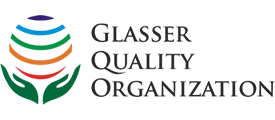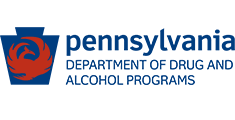The signs, symptoms, and effects of bipolar disorder can be different for every person impacted. Learning about bipolar disorder is one of the first steps towards getting better.
Understanding Bipolar Disorder
Learn about bipolar disorder
People with bipolar disorder experience periods of extreme emotion known as manic episodes and depressive episodes. During a manic episode, a person will often have excessive energy, little need for sleep, poor judgment, impulsivity, and grandiosity. A depressive episode is in many ways the opposite of a manic episode, with depressed mood, loss of motivation, lack of interest or pleasure in daily activities, fatigue, inability to sleep, and a reduced ability to think and concentrate. Some people with bipolar disorder also experience hypomanic episodes, which are shorter and generally less severe forms of mania. In addition, a person may experience a mixed state, which includes symptoms of both manic and depressive episodes.
There are three primary types of bipolar disorder: bipolar I disorder, bipolar II disorder, and cyclothymic disorder. The difference between bipolar I disorder and bipolar II disorder involves how a person experiences manic episodes. People with bipolar I disorder experience full manic episodes while people with bipolar II disorder experience hypomanic episodes. People who have cyclothymic disorder experience manic symptoms and depressive symptoms, though these symptoms do not meet criteria for full manic, hypomanic, or depressive episodes.
People who are struggling with bipolar disorder may try a number of different ways of coping with their symptoms. Unfortunately, some people turn to substance abuse to help them cope. This behavior can lead to many negative outcomes, including the development a substance use disorder, which can exacerbate symptoms of bipolar disorder and create additional problems as well. Because of this, it is important to seek treatment for bipolar disorder as early on as possible.
Statistics
Bipolar disorder statistics
Data from the fifth edition of the Diagnostic and Statistical Manual of Mental Disorders (DSM-5) indicates that approximately 0.6 percent of Americans are diagnosed with bipolar I disorder in a given year. Men are slightly more likely than women to develop this disorder. Bipolar II disorder is slightly more common than bipolar I with about 0.8 percent of people diagnosed with it in a given year. Cyclothymic disorder is the most common type of bipolar disorder, with approximately 0.4 to 1 percent of people having this diagnosis in any 12-month period.
Causes and Risk Factors
Causes and risk factors for bipolar disorder
A person’s risk of bipolar disorder is strongly affected by both genetic and environmental factors, including the following:
Genetic: A family history of bipolar disorder is one of the strongest and most consistent risk factors for developing this disorder. People with close relatives who have bipolar disorder have a risk that is 10 times higher than that of the general population.
Environmental: Certain environmental factors can also affect a person’s chance of developing bipolar disorder. For example, the disorder is more common in high-income countries like the United States. In addition, people who are separated, divorced, or widowed have higher rates of bipolar disorder.
Risk Factors:
- Family history of bipolar disorder
- Family history of schizophrenia
- Being diagnosed with another mental illness or substance use disorder
- Being separated, divorced, or widowed
Signs and Symptoms
Signs and symptoms of bipolar disorder
The signs and symptoms of bipolar disorder will vary depending on one’s personality, the severity of the disorder, and whether one is experiencing a manic or depressive episode. These signs and symptoms can include the following:
Behavioral symptoms:
- Excessive goal-directed activity
- Talkativeness
- Involvement in risky or reckless behavior
- Impulsivity
Physical symptoms:
- Reduced need for sleep
- Significant weight changes
- Changes in appetite
- Difficulty sleeping or oversleeping
- Fatigue or loss of energy
Cognitive symptoms:
- Racing thoughts
- Distractibility
- Poor judgment
- Difficulty thinking or concentrating
- Trouble making decisions
- Thinking about death
Psychosocial symptoms:
- Abnormally elevated mood
- Irritable mood
- Inflated self-esteem
- Depressed mood
- Feeling empty or hopeless
- Loss of pleasure in most activities
- Feeling agitated, restless, or jittery
Effects
Effects of bipolar disorder
An untreated bipolar disorder can wreak havoc on a person’s life. If a person also is struggling with a co-occurring substance use disorder, the potential for damage in his or her life is much greater. The following are among the effects that bipolar disorder and a co-occurring substance use disorder can have on a person’s life:
- Interruptions in overall functioning that persist even between depressive or manic episodes
- Poor work performance
- Job loss or demotion
- Low socioeconomic status
- Cognitive impairments
- Relationship tension
- Separation or divorce
- Difficulty maintaining relationships
- Social isolation
- Developing additional substance use disorders
- Suicide attempts
Co-Occurring Disorders
Bipolar disorder and co-occurring disorders
Individuals who are struggling with bipolar disorder frequently also struggle with co-occurring substance use disorders. In addition to substance use disorders, the following mental health disorders are known to sometimes co-occur with bipolar disorder:
- Panic disorder
- Social anxiety disorder
- Specific phobia
- Generalized anxiety disorder
- Attention-deficit/hyperactivity disorder (ADHD)
- Eating disorders
- Sleep disorders







